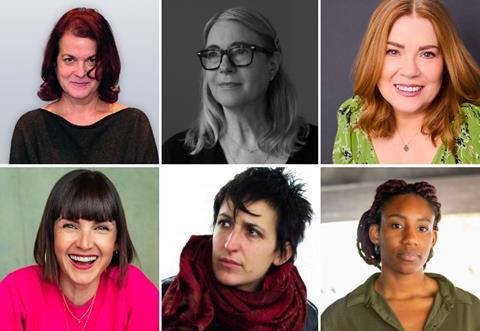
The casting directors nominated for this year’s Bafta casting award faced contrasting challenges — from contained dramas presenting make-or-break choices in key roles, to an expansive epic with scores of speaking parts. Screen profiles the nominees.
Susan Shopmaker - The Holdovers
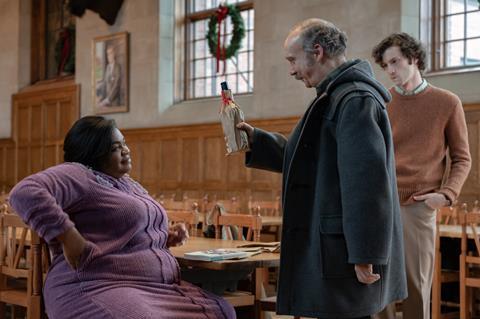
Although Alexander Payne’s The Holdovers already had his Sideways star Paul Giamatti attached when she came on board, casting director Susan Shopmaker still faced a challenging task on the comedy-drama about three misfits at a New England boarding school over the 1970 Christmas holiday.
“Alexander said up front that he didn’t want really recognisable faces in any of the roles,” recalls Shopmaker, whose long casting résumé takes in indie films including Martha Marcy May Marlene, The Iron Claw and First Reformed. “Because that would take us out of what he was trying to do, which was to make a movie that felt like it was made in the ’70s.”
For the part of Mary Lamb, the grieving school cook who befriends Giamatti’s curmudgeonly classics teacher, Shopmaker and her team auditioned around 100 actresses. Da’Vine Joy Randolph, an early favourite for the role whose work with Eddie Murphy in Dolemite Is My Name earned Payne’s admiration, had been unavailable but eventually got the part — and has earned herself supporting actress Oscar and Bafta nominations, matching Giamatti’s for leading actor. “She clearly had a sense of humour and a lightness,” says Shopmaker of Randolph. “But this is also someone who’s grieving deeply. She had the depth that Alexander needed in the role.”
To cast the role of Angus, the troubled pupil who forms an unlikely bond with Giamatti’s character, Shopmaker and her team conducted an extensive search through the English-speaking world, visiting New England schools like the one in the film and even considering the children of friends. They received around 3,000 submissions and auditioned more than 800 youngsters, some with acting experience, some without. The character, explains Shopmaker, had to “have a depth to him, and also be a troublemaker. And something had to come through where you feel for him at the end of the movie.”
It was when she tried contacting the drama departments of the real schools where the film was set to shoot that Shopmaker came across Dominic Sessa, then in his final year at Deerfield Academy in Massachusetts. Although he was a regular performer with Deerfield’s drama department, Sessa, now nominated for the best supporting actor Bafta, had never acted on film before. Still, suggests Shopmaker, he had an edge over young actors with film or TV experience because of his ability to communicate “a kind of innocence” in Angus. “Sometimes kids who work and work and work lose a bit of that quality,” notes the casting director.
Shopmaker had never cast a Payne project before and admits she was “terrified” about the prospect of working with the Oscar-winning filmmaker. But Payne “made the process really pleasant”, she says. “It was hard work, but you knew you were working for someone who cared, and that makes all the difference in the world. He loves his material, he does love actors, but he also loves the people he works with.” John Hazelton
Ellen Lewis, Rene Haynes - Killers Of The Flower Moon
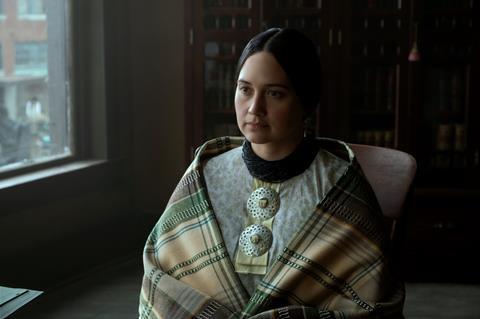
Over her 30 years working with Martin Scorsese — on films including Goodfellas, Kundun, Silence and The Wolf Of Wall Street — Ellen Lewis has, she says, “always tried to keep our casting as authentic as possible”. So with a notably long list of roles to fill for Scorsese’s fact-based crime saga set in the Native American Osage community, Lewis enlisted the help of Indigenous expert Rene Haynes, known for her casting work on Prey, The New World and Yellowstone.
With Scorsese regulars Leonardo DiCaprio, Robert De Niro and Jesse Plemons attached early for the three major non-Indigenous roles in Killers Of The Flower Moon, casting directors Lewis and Haynes — who at the time had recently worked together on Netflix western series Godless — began their work searching for a female lead to play Osage character Mollie Burkhart.
Haynes says “everyone who is anyone” from her database of Indigenous North American actresses was considered for the role. But Lily Gladstone, the award-winning actress from the Blackfeet and Nez Perce Tribal Nations, emerged as a leading contender — thanks partly to her performance in Kelly Reichardt’s acclaimed 2016 drama Certain Women but also, says Haynes, because of her “intelligence and experience. I was struck by how Mollie does a lot of her communication non-verbally, and Lily kept coming to mind because that is a talent she has.” Confirming the casting directors’ instincts, Gladstone got the part and has earned a lead actress Oscar nomination for her performance.
In casting the more than 60 other named Indigenous characters in the film, Lewis and Haynes set out to have all Osage roles played by Osage actors or, failing that, by Native Americans from other groups. Osage members appearing include Everett Waller, Talee Redcorn and Yancey Red Corn; Tantoo Cardinal and William Belleau are among the actors from other groups.
A few months before the Covid pandemic struck in March 2020, the film staged open casting calls for Indigenous characters in Pawhuska, centre of the Osage Nation reservation, and the nearby cities of Tulsa and Oklahoma City. The calls attracted 2,500 hopefuls, with most of those attending in Pawhuska being non-actors. There were, says Haynes, “some fantastic discoveries. These were people who were interested in telling their story and telling it right. Marty [Scorsese] and his producers had developed a real relationship and level of trust with that community before Ellen and I reached out to them. It would have been so much more difficult had that groundwork not been laid.”
Material gathered from the open calls allowed the Indigenous casting process to resume in earnest after a six-month pandemic suspension. Meanwhile Lewis and Haynes set about filling other roles — John Lithgow and Brendan Fraser were signed up little more than a month before shooting — by utilising Zoom and some out-of-the-box thinking.
Filling a number of smaller roles with music artists — among them Jack White, Charlie Musselwhite, Jason Isbell and Sturgill Simpson — from the Americana and country scenes, for example, “came about very organically”, explains Lewis. “We were working with agents all over the south so I started saying, ‘Do you have singers that are interested in acting?’ It was the pandemic, so people were not on tour.” John Hazelton
Kahleen Crawford - All Of Us Strangers

Andrew Haigh’s UK drama All Of Us Strangers did not turn to chemistry casting techniques. Instead, the process meant long and involved conversations between casting director Kahleen Crawford and Haigh, which went on for more than a year. The film stars Andrew Scott as Adam, who enters a slow-burning romance with Harry, played by Paul Mescal. As a relationship develops, Adam finds himself drawn back to his childhood home, where his parents, played by Claire Foy and Jamie Bell, appear to be living just as they were on the day they died 30 years ago. “It was a year of talking about the sort of atmosphere that Andrew [Haigh] was looking to create, about the relationships, the connections, the age and stage that Adam and Harry were at and how that related to the parents,” says Crawford.
Haigh wanted a queer actor to play Adam. While his screenplay is inspired by Taichi Yamada’s 1987 Japan-set novel Strangers, the All Of Us Strangers script is one of his most personal yet, relocating the action to London and suburban Croydon, and a world familiar to the filmmaker growing up. “He didn’t want to have to explain to his actor about this gay relationship, about the queer community, about the intricacies of shooting the love scenes. He wanted someone that recognised it.”
When it came to casting Harry, Haigh and Crawford — with support from the film’s producers including Graham Broadbent and Sarah Harvey — opted to cast the net as wide as possible. “Because of the nature of Harry, we were not limited in any way,” says Crawford. “The person could have been from anywhere with the only requirement that the pair were roughly within an age range where it didn’t feel like they were too young to be entering into a relationship so audiences would truly invest in them.”
Those long conversations continued when casting the parents. “Although we know that Adam is older than both parents are when they died, we had to consider if the audience is going to go with that,” says Crawford. “The producers supported us about who the right people to tell these stories were.” Foy (who is Bafta-nominated for her performance, as is Mescal) and Bell even matched up to the requirement that there was a believable physical resemblance to Scott’s Adam.
Crawford and Haigh have worked together for more than 10 years, first collaborating on Haigh’s 2011 feature Weekend. “Talking about the parents, talking about [key] scenes, what he wanted Adam to be experiencing, these things were very personal and I hope Andrew felt he could trust me in those conversations.” Stuart Kemp
Cynthia Arra - Anatomy Of A Fall
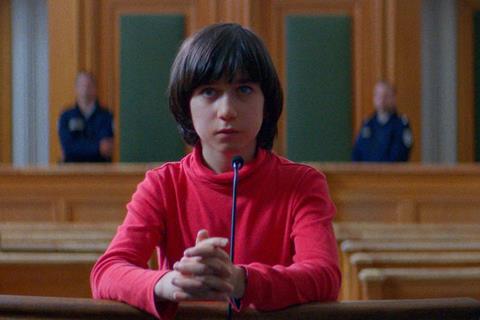
Cynthia Arra is both a casting director and an “actor-directing collaborator on set” — a unique credit for a niche profession that, says Arra, “doesn’t really exist in France”, to her knowledge. She works not only on the casting process, but also as an acting coach for all of the film’s talent before and during filming in what she describes as “a triangular relationship between the director, the actors and me”.
Arra first met Justine Triet at Paris’s elite art school l’Ecole des Beaux Arts more than two decades ago, when the two were just 20 years old. Arra went on to work on all of Triet’s short films and features in her dual role, as well as with Triet’s partner and Anatomy Of A Fall co-writer Arthur Harari on his own films as a director.
For Anatomy Of A Fall, Arra did not have to look for the film’s female lead as Triet wrote the part of novelist Sandra — accused of murder after her husband falls to his death — specifically for Sandra Hüller. After meeting the actress at the Berlinale in 2012, Hüller was cast in Triet’s 2019 film Sibyl. From then on, “Justine and I always wanted to work with Sandra again.”
For Anatomy Of A Fall, “we wanted Sandra, then we adapted”, continues Arra. “The priority for Justine was Sandra, and the story gravitated to her. The role called for an actress able to show all the nuances of both guilt and innocence.” Hüller is Bafta- and Oscar-nominated for her performance.
Arra says her biggest challenge was casting Daniel, who plays the family’s visually impaired son. The part was originally written as a completely blind child, and Arra was tasked with finding a blind non-professional actor around 11 years old who also spoke English and played piano. Triet also “set the bar high”, asking Arra to find “a mix of Jean-Pierre Léaud from The 400 Blows and River Phoenix in Running On Empty”.
Arra contacted organisations who work with blind children and spent four months on an intense casting quest, spanning France, Belgium and Switzerland. “At first, we were stubbornly looking for a blind child because of the delicate subject of the representation of minorities in cinema and then the fear of not achieving an authentic representation of blindness,” she says.
Triet and Harari then revamped the script to give the character a more nuanced visual impairment, thus extending the casting search to include non-blind actors. “Many people said that Arthur and Justine had written dialogue that was too deep for a child and wasn’t credible — and for other children, it wasn’t,” says Arra. But Milo Machado Graner “wasn’t like other children. There was a maturity in his gaze and emotional intelligence. As soon as Milo said the lines, they became believable.”
Arra completed the cast with a blend of talent, spanning actors, non-professionals, and film and theatre directors. As she explains, “Non-professional actors bring professionals into a certain imbalance, take them out of their comfort zones and destabilise them while the professional actors give contours and a framework to non-professionals.” Rebecca Leffler
Isabella Odoffin - How To Have Sex
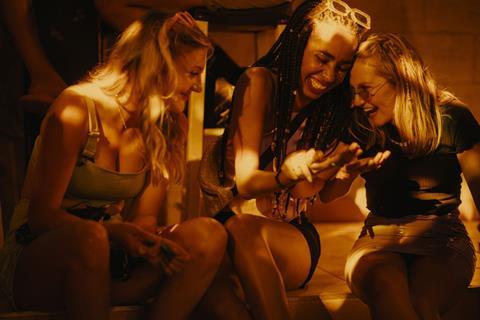
When cinematographer Molly Manning Walker sent casting director Isabella Odoffin her script for How To Have Sex, it was an instant yes, despite knowing it was going to be a tough casting gig. Manning Walker’s debut feature as director stars six young performers as two groups of friends on a rites-of-passage holiday — drinking, clubbing and hooking up — in what should be the best summer of their lives. The fun in the sun however leads to dark experiences for Mia McKenna-Bruce’s protagonist Tara. Cast alongside her are Lara Peake and Enva Lewis as her best friends; plus Shaun Thomas, Samuel Bottomley and Laura Ambler as the trio they collide with.
“We had to get it right given what was at the heart of the story and the young characters involved,” says Odoffin. The casting director initiated a two-pronged approach: brainstorming actors who she had already come across in previous searches, from watching productions and auditioning; and also casting the net UK-wide — going out to places such as The Television Workshop in Nottingham and Manchester, and Yorkshire School of Acting.
During a process that saw Manning Walker’s “pageturner” screenplay evolve and change with each audition, chemistry read and producer note, Odoffin realised the project’s success would hinge on finding young actors with work under their belts. “It’s about lifting the text to life when you’ve got a toolkit, and you’ve done some work before,” she says. “It feels more seamless.”
Odoffin knew McKenna-Bruce, Peake, Bottomley and Thomas from previous work and auditions. The casting director, who had already worked with Manning Walker on two short films, also extended her search across social media to identify fresh talent. TikTok videos of Ambler, a freelance painter and decorator, grabbed Manning Walker and Odoffin’s attention. Lewis likewise had not done any professional work but shone, shaping her character during the film’s multiple and intense chemistry auditions.
Odoffin says How To Have Sex was one of the most intense chemistry-read processes she has experienced, with a wellbeing executive on hand to help create a safe place for the actors and non-actors to explore and push boundaries. “We’re workshopping text in order to excavate characters and also learn as we go along. You need to create a space that allows for anyone within that room to feel like they can flex and really enjoy and get into it, trust each other. Lots came out of those sessions.”
Last year, Odoffin picked up a British Independent Film Award (Bifa) for her work, while McKenna-Bruce and Thomas took home best lead and supporting performance respectively. McKenna-Bruce has also been nominated for Bafta’s EE Rising Star Award this year. Stuart Kemp






![The Brightest SunScreen[Courtesy HKIFF]](https://d1nslcd7m2225b.cloudfront.net/Pictures/274x183/3/5/0/1448350_thebrightestsunscreencourtesyhkiff_312678.jpg)


















No comments yet